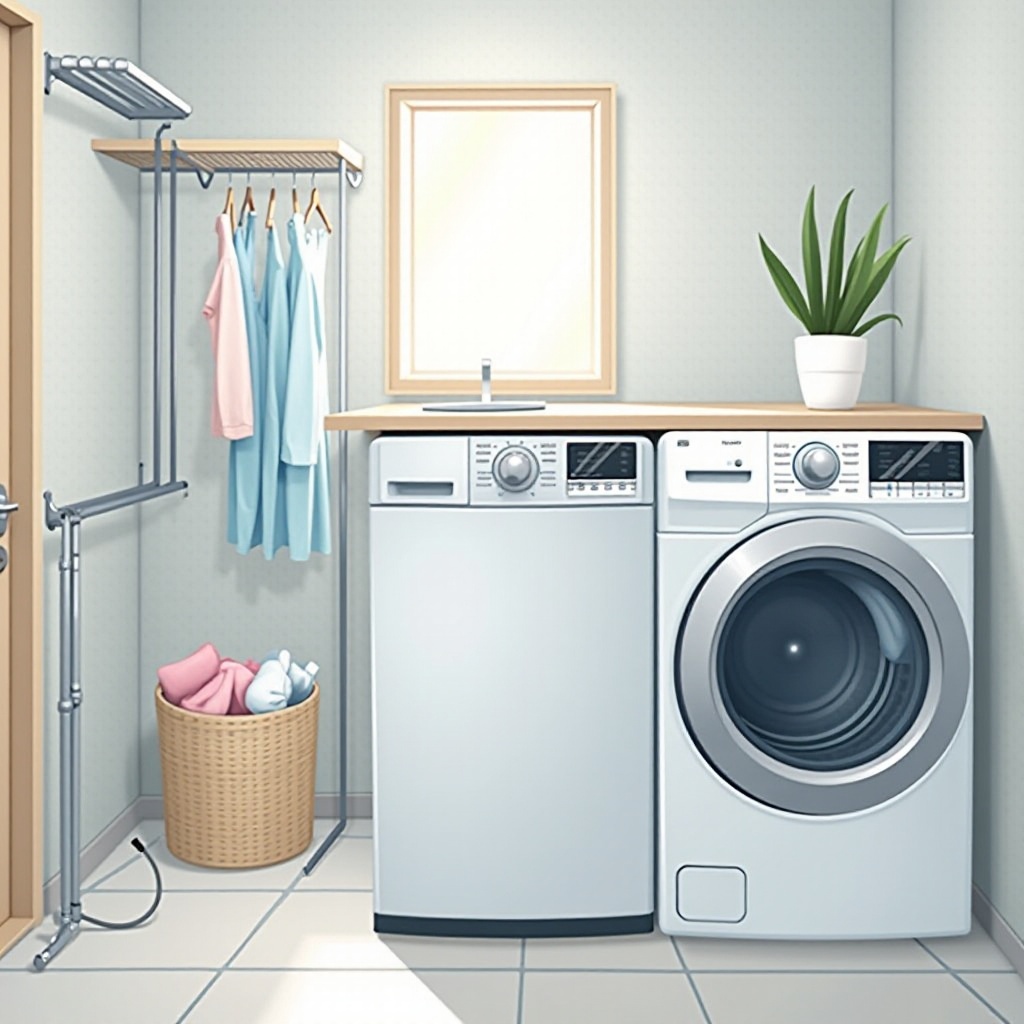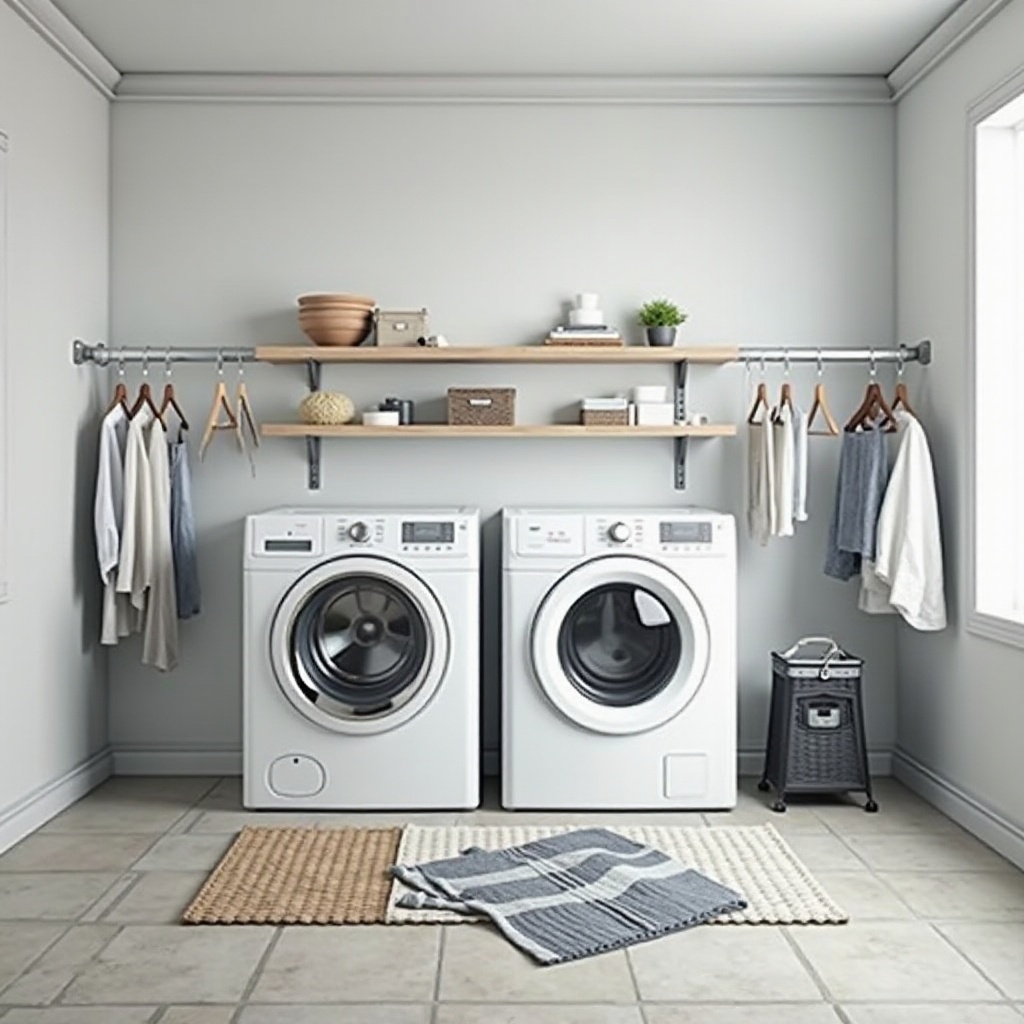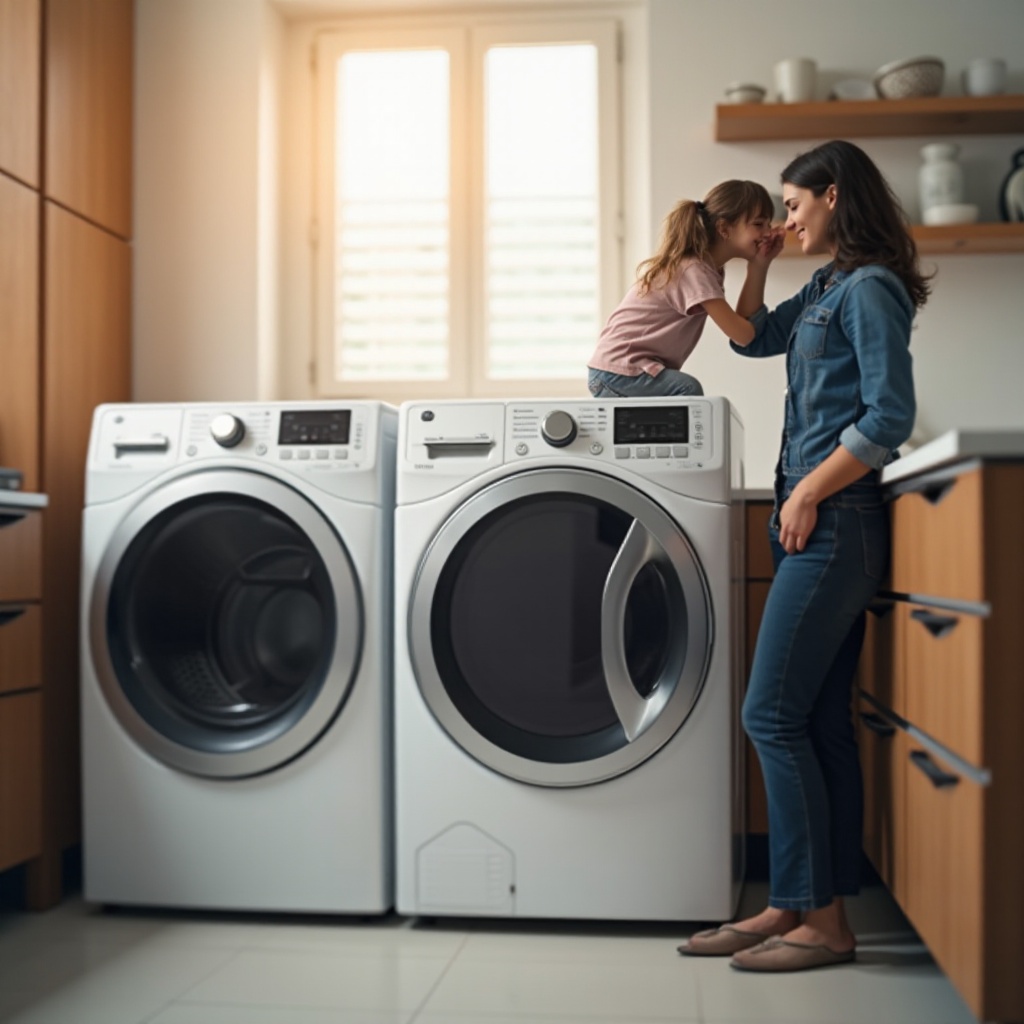Introduction
Connecting a washer and dryer can be straightforward with the right guidance. Proper installation safeguards efficiency and prevents issues like leaks or electrical problems. Whether you're settling into a new space or updating old appliances, this guide leads you through the necessary steps to connect your washer and dryer without the need for professional assistance.

Preparing for Installation
Start by gathering all essential tools and materials. You'll need adjustable wrenches, a level, a screwdriver, and plumbing tape. Additionally, ensure you have suitable hoses for water and air connections. Safety matters; therefore, equip yourself with protective gloves and eyewear.
Before commencing, pinpoint your connections: water supply lines, electrical outlets, and a drain point for the washer. Verify that the space available accommodates both units, leaving some room for the dryer's ventilation. This preparation is crucial for a successful installation.
Tools and Materials Needed
- Adjustable wrenches
- Screwdriver set
- Level
- Plumbing tape
- Protective gloves and eyewear
- Water hoses for the washer
- Vent hose for the dryer
Safety Considerations and Precautions
- Turn off the water supply before connecting hoses.
- Unplug all appliances before making any electrical connections.
- Wear protective gear to prevent accidents.
- Ensure the workspace is well-lit and clutter-free.

Installing the Washer
With preparations complete, focus on the washer. Start by positioning it near the installation area to simplify hose connections.
Positioning and Leveling Your Washer
Place the washer and use a level to adjust its feet. An unstable washer can lead to noise and wear. Modify each foot until the machine is balanced.
Connecting the Water Supply
- Attach a hose to each water inlet, aligning hot and cold connections to the respective faucets.
- Secure the hose ends tightly with a wrench.
- Turn on the water supply and check for leaks.
Hooking Up the Drain Hose
- Connect the drain hose to the washer's back outlet.
- Insert the other end into the standpipe or sink.
- Secure it to prevent leaks or spills.
Installing the Dryer
After setting up the washer, proceed with the dryer. Installation procedures vary based on whether it's a gas or electric model.
Choosing Between Gas and Electric Dryers
Identify your dryer's type. Gas dryers connect to a gas line, while electric dryers require a compatible power outlet.
Ventilation Setup and Requirements
- Attach one end of the vent hose to the dryer's outlet.
- Direct the hose to the designated exterior vent.
- Secure connections to ensure proper airflow and prevent lint buildup.
Electrical Connections for the Dryer
- Plug electric dryers into an outlet.
- Gas dryers need a connection to the gas line; check for leaks using a detector.
- Ensure all connections are secure.
Testing Your Installation
With both appliances in place, conduct a test run. This step confirms proper connections and functioning.
Running a Test Cycle for Your Washer and Dryer
- Load each machine with a small batch of laundry.
- Use normal settings to verify operation.
- Monitor for unusual sounds and leaks.
Initial Troubleshooting Steps
- Recheck and tighten connections if leaks are detected.
- Inspect outlet integrity for electrical issues.
- Confirm proper ventilation if drying times are prolonged.

Maintenance Tips for Longevity
Regular upkeep extends your appliances' life and ensures top performance.
Routine Cleaning and Checks
- Clean lint filters in dryers after each use.
- Periodically inspect hoses for wear and replace when needed.
- Run a cleaning cycle with a washer cleaner monthly.
Handling Minor Repairs
- Address small leaks and odd noises promptly.
- Tighten loose connections or swap out faulty hoses as necessary.
Conclusion
Congratulations on connecting your washer and dryer! By carefully planning and executing the installation, you've minimized potential problems and optimized the performance of your appliances. Regular maintenance and prompt troubleshooting will keep your washer and dryer running smoothly for years.
Frequently Asked Questions
What tools are needed to connect a washer and dryer?
Basic tools include adjustable wrenches, a screwdriver set, a level, and plumbing tape. Ensure you also have hoses for water and vent connections.
Can I connect a washer and dryer without professional help?
Yes, with the right tools and guidance, most homeowners can connect their washer and dryer themselves, saving on installation costs.
What common issues might arise during installation?
Common issues include water leaks, improper leveling, and electrical or gas connection problems. These are generally fixable with proper attention to the setup instructions.
